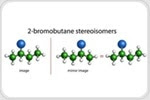| ||||||||||||||||||||||||
| ||||||||||||||||||||||||
| ||||||||||||||||||||||||
| ||||||||||||||||||||||||
| ||||||||||||||||||||||||
martes, 1 de mayo de 2018
New Opioid Molecule Designed to Prevent Side Effects
New Opioid Molecule Designed to Prevent Side Effects
Suscribirse a:
Enviar comentarios (Atom)




























.png)












No hay comentarios:
Publicar un comentario